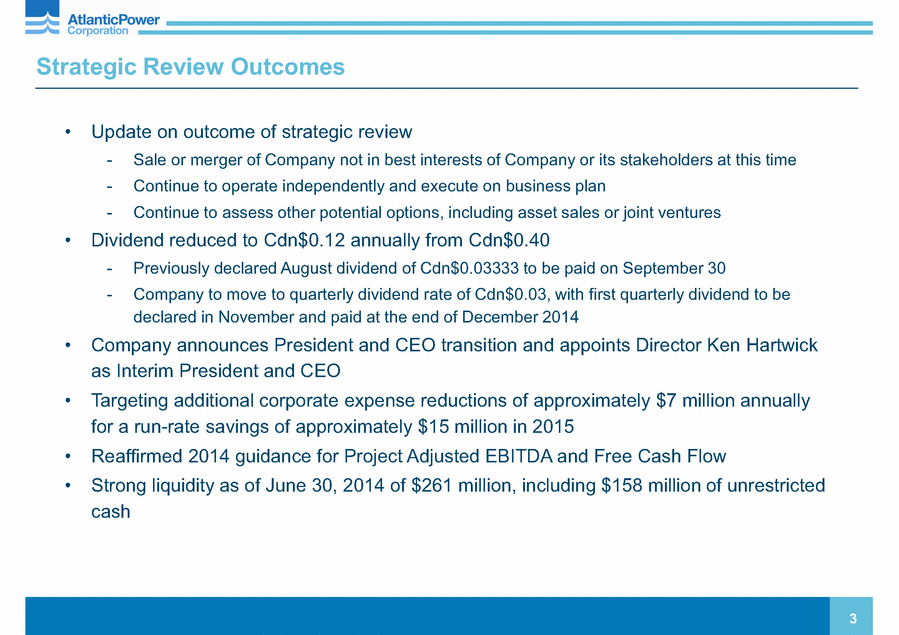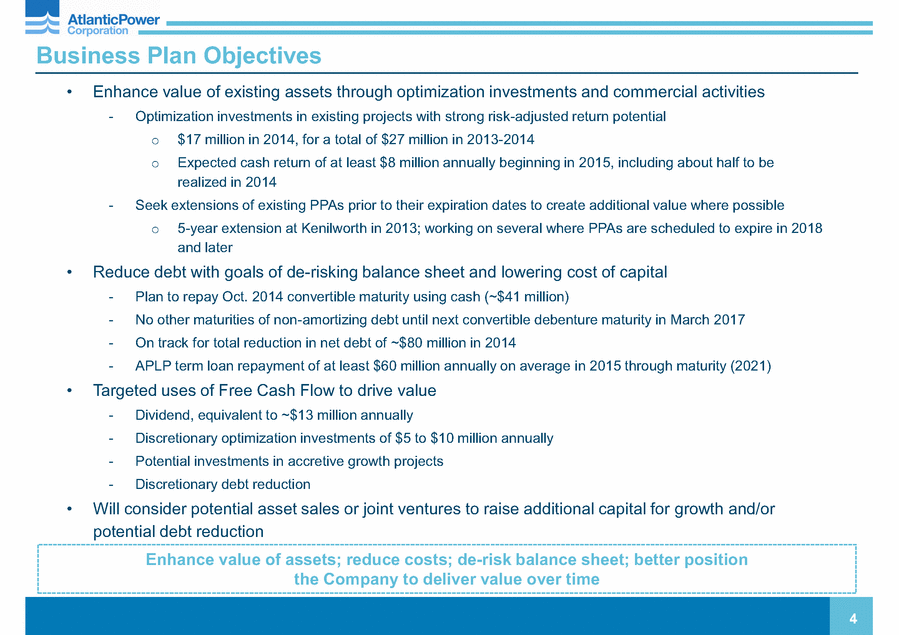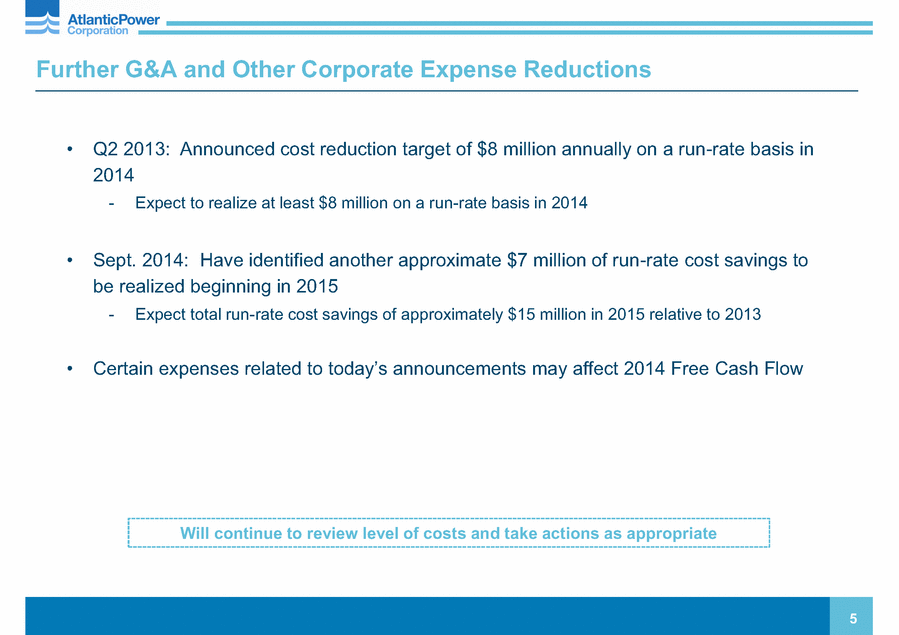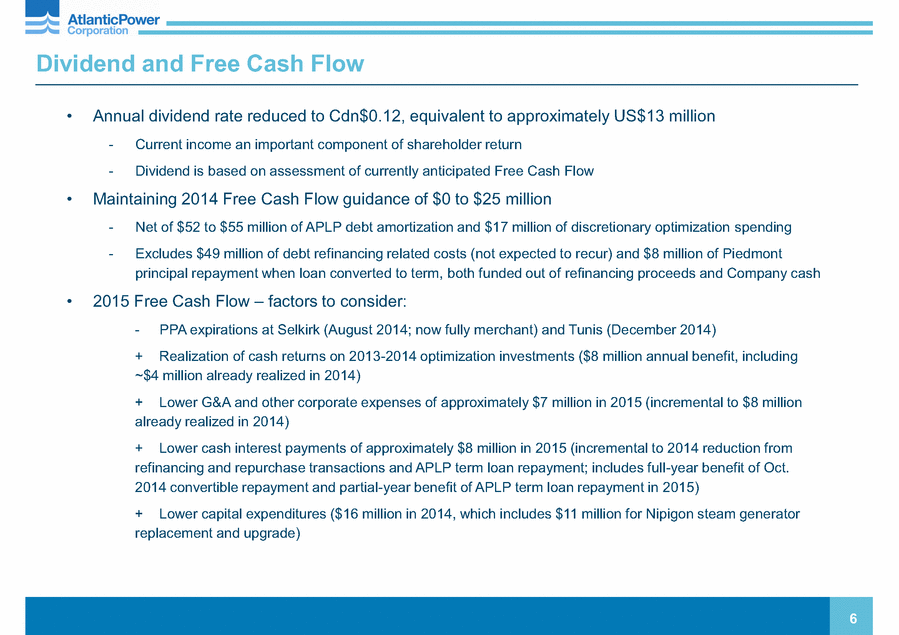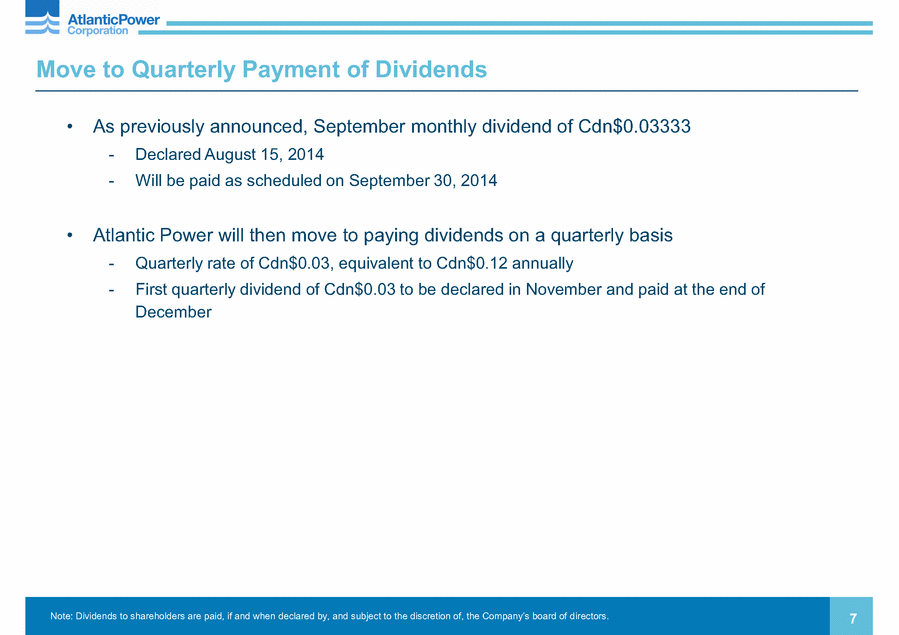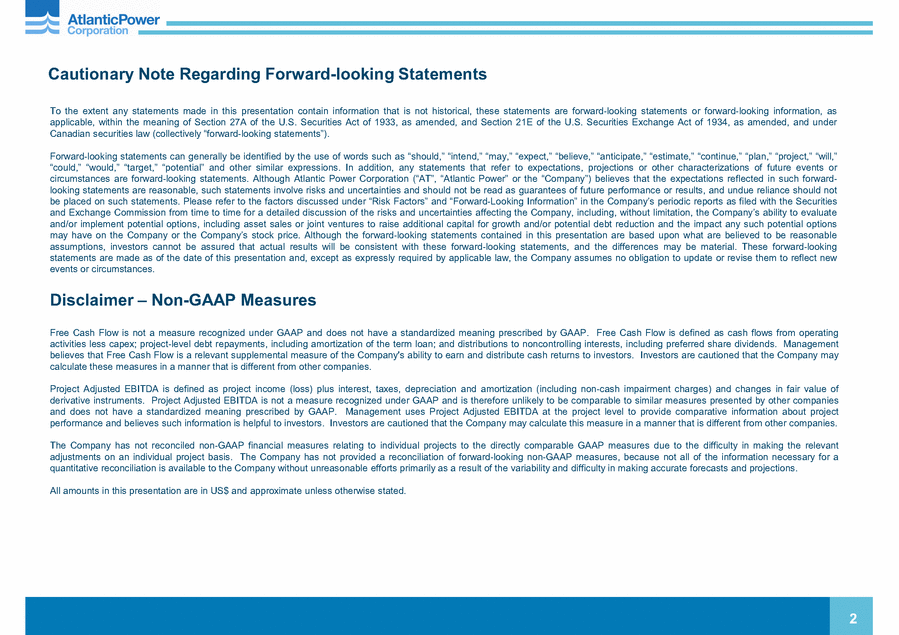
| Cautionary Note Regarding Forward-looking Statements 2 To the extent any statements made in this presentation contain information that is not historical, these statements are forward-looking statements or forward-looking information, as applicable, within the meaning of Section 27A of the U.S. Securities Act of 1933, as amended, and Section 21E of the U.S. Securities Exchange Act of 1934, as amended, and under Canadian securities law (collectively “forward-looking statemennts”) Forward-looking statements can generally be identified by the use of words such as “shoukd,” “intend,” “may,” “expect,” “believe,” “anticipate,” “estimate,” “continue,” “plan,” “project,” “will,” “could,” “would,” “target,” “potential” and other similar expressions. In addition, any statements that refer to expectations, projections or other characterizations of future events or circumstances are forward-looking statements. Although Atlantic Power Corporation (“AT”, “Atlantic Power”or the “Company” believes that the expectations reflected in such forward-looking statements are reasonable, such statements involve risks and uncertainties and should not be read as guarantees of future performance or results, and undue reliance should not be placed on such statements. Please refer to the factors discussed under “Risk Factors”and “Forward-Looking Information” in the Company’s periodic reports as filed with the Securities and Exchange Commission from time to time for a detailed discussion of the risks and uncertainties affecting the Company, including, without limitation, the Company’s ability to evaluate and/or implement potential options, including asset sales or joint ventures to raise additional capital for growth and/or potential debt reduction and the impact any such potential options may have on the Company or the Company’s stock price. Although the forward-looking statements contained in this presentation are based upon what are believed to be reasonable assumptions, investors cannot be assured that actual results will be consistent with these forward-looking statements, and the differences may be material. These forward-looking statements are made as of the date of this presentation and, except as expressly required by applicable law, the Company assumes no obligation to update or revise them to reflect new events or circumstances. Free Cash Flow is not a measure recognized under GAAP and does not have a standardized meaning prescribed by GAAP. Free Cash Flow is defined as cash flows from operating activities less capex; project-level debt repayments, including amortization of the term loan; and distributions to noncontrolling interests, including preferred share dividends. Management believes that Free Cash Flow is a relevant supplemental measure of the Company's ability to earn and distribute cash returns to investors. Investors are cautioned that the Company may calculate these measures in a manner that is different from other companies. Project Adjusted EBITDA is defined as project income (loss) plus interest, taxes, depreciation and amortization (including non-cash impairment charges) and changes in fair value of derivative instruments. Project Adjusted EBITDA is not a measure recognized under GAAP and is therefore unlikely to be comparable to similar measures presented by other companies and does not have a standardized meaning prescribed by GAAP. Management uses Project Adjusted EBITDA at the project level to provide comparative information about project performance and believes such information is helpful to investors. Investors are cautioned that the Company may calculate this measure in a manner that is different from other companies. The Company has not reconciled non-GAAP financial measures relating to individual projects to the directly comparable GAAP measures due to the difficulty in making the relevant adjustments on an individual project basis. The Company has not provided a reconciliation of forward-looking non-GAAP measures, because not all of the information necessary for a quantitative reconciliation is available to the Company without unreasonable efforts primarily as a result of the variability and difficulty in making accurate forecasts and projections. All amounts in this presentation are in US$ and approximate unless otherwise stated. Disclaimer —Non-GAAP Measures |


